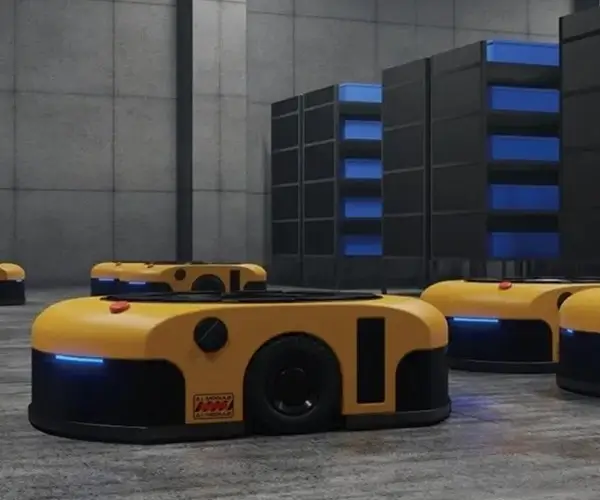Sure! Here's the first part of a soft, engaging article centered around the theme "Arduino Servo Motor Library." I'll craft it to be informative and captivating, setting the stage for the second part.

Imagine a world where machines move with precision, where tiny robotic arms grasp, pivot, and perform intricate tasks that once seemed complex or out of reach. This is the magic of servo motors—tiny champions of control—finding their way into countless devices, from the simplest remote-controlled cars to complex robotic arms used in manufacturing. Harnessing their potential, however, requires more than just connecting wires; it demands a precise, flexible way to command these motors. Enter the Arduino Servo Motor Library, a vital tool that transforms the way hobbyists, students, and seasoned engineers alike bring their ideas to life.
What Is a Servo Motor?
At its core, a servo motor is a compact, high-precision motor designed to rotate to a specific position within a range, often up to 180 degrees, but sometimes more. Unlike a simple DC motor that spins freely when powered, a servo incorporates a built-in feedback mechanism, allowing it to stop precisely where it should. This makes servos invaluable in applications where accurate positioning matters, such as in camera gimbals, robotic arms, or even tiny pilot controls in drones.
Why Use an Arduino for Control?
Arduino, the open-source microcontroller platform, has revolutionized electronics for everyone—from seasoned engineers to creative hobbyists. Its simplicity in programming and broad compatibility make it an ideal brain for controlling servo motors. But even with Arduino's user-friendly environment, manually coding the correct timing and control signals for servos can be tedious and error-prone, especially if you are juggling multiple motors.
This is where the Arduino Servo Library shines, providing a streamlined, reliable, and efficient way to interface with servo motors. With just a few lines of code, you can command a servo to move to a specific angle, sweep across a range, or respond dynamically to sensor inputs.
Introducing the Arduino Servo Library
The Arduino Servo Library is a standard, pre-installed library included with the Arduino IDE, designed to simplify controlling hobby servo motors. Its core functions and classes abstract the complex timing signals needed (PWM—Pulse Width Modulation) into straightforward commands. Whether you’re programming a single servo or orchestrating an entire orchestra of multiple motors, the library handles the heavy lifting.
Imagine you want your robotic arm to pick and place objects with siege-like precision or create an interactive art installation that responds to audience movements. The Servo Library makes these visions achievable without deep dives into low-level signal timing or complex code structures. Instead, you get a simple, intuitive interface that empowers your creativity.
Getting Started: Hardware and Basic Setup
Before diving into coding, it’s essential to understand what hardware is needed. At the heart is the servo motor, which generally has three wires: power (usually red), ground (black or brown), and control (yellow, orange, or white). The servo’s power supply should be capable of providing enough current—many smaller servos can run off the Arduino’s 5V pin, but larger or multiple servos often demand an external power source.
The typical setup involves connecting the power and ground to the Arduino’s respective pins, and the control wire to one of the Arduino’s PWM-capable digital pins. This setup allows the Arduino to send precise signals that tell the servo where to position itself.
Your First Code: Simple Movement
Here’s a classic example to get started:
#include Servo myServo; // create a servo object void setup() { myServo.attach(9); // attaches the servo on pin 9 } void loop() { myServo.write(90); // move servo to the middle position delay(1000); myServo.write(0); // moves to 0 degrees delay(1000); myServo.write(180); // moves to 180 degrees delay(1000); }
This simple code commands the servo to move to 0°, 90°, and 180° with a one-second pause at each position. It demonstrates the ease of controlling position with the write() function and highlights how quickly you can prototype or control a servo in your projects.
Beyond Basics: Advanced Controls
Once you're comfortable with basic commands, the Servo Library supports more complex movements, such as sweeping motions or synchronized multi-servo control. You can create sequences, respond to user inputs, or integrate sensor data—making your projects more interactive and intelligent.
But what makes the library particularly compelling is its efficiency and reliability. It manages precise timing, ensuring your servo receives the signals it needs at exactly the right intervals, allowing for smooth and consistent movements. It also handles multiple servos – a critical feature for more ambitious projects like robotic grippers or multi-jointed robots.
Limitations and Considerations
While the Servo Library is a powerful tool, it’s important to recognize its boundaries. The library is primarily designed for small, hobby-grade servos that operate at moderate speeds and torque. For larger or industrial servos, you may need specialized controllers or real-time operating systems.
Also, controlling many servos simultaneously can strain your Arduino’s processing capacity and power supply. External power supplies and careful wiring become essential for larger projects. Additionally, some servos may generate electrical noise that can interfere with other components, so proper shielding and decoupling are often advised.
The Bigger Picture: Creativity Meets Control
Harnessing the Arduino Servo Motor Library unlocks a world of dynamic projects—animating sculptures, building robot pets, creating remote-controlled vehicles, or even developing automated systems for home improvement. The library serves as a bridge, translating your ideas into physical movement, with simplicity and dependability at its core.
The essence of this tool lies not just in controlling motors but in empowering you to visualize solutions and bring them into reality. With a blend of straightforward coding and sophisticated control, your projects can transcend hobbyist tinkering and evolve into genuinely impressive, functional gadgets.
Kpower has delivered professional drive system solutions to over 500 enterprise clients globally with products covering various fields such as Smart Home Systems, Automatic Electronics, Robotics, Precision Agriculture, Drones, and Industrial Automation.




































